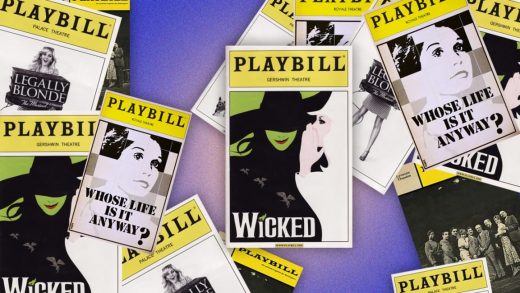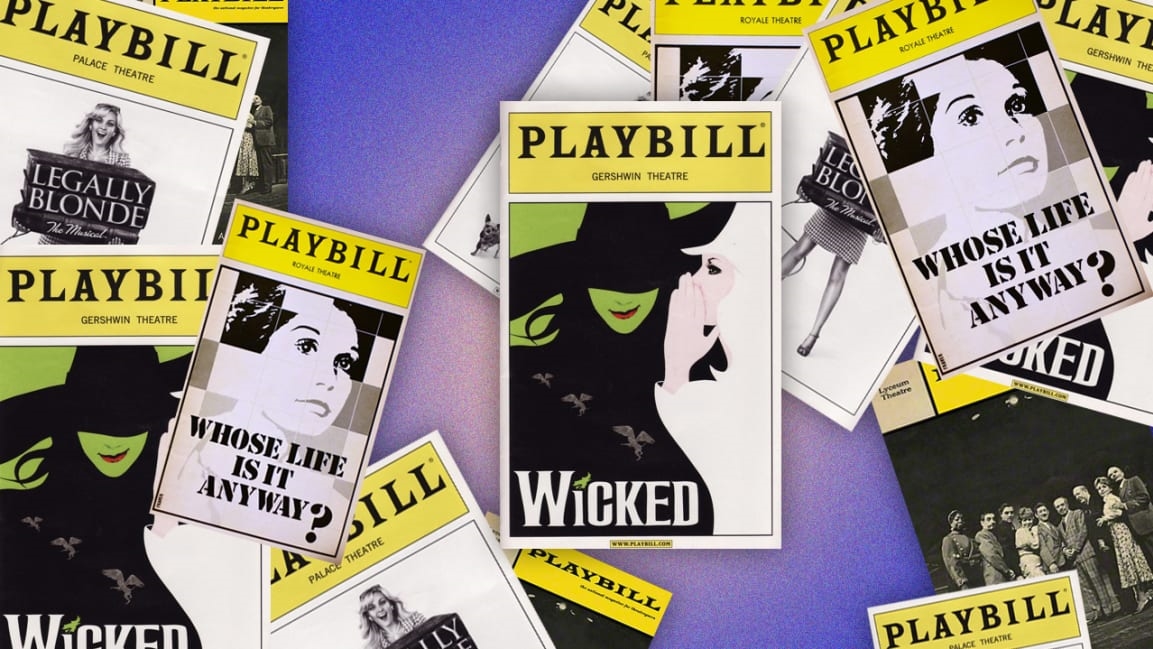With Broadway shuttered for 2020, can Playbill survive the pandemic?
When the novel coronavirus made its unwelcome Broadway debut in early March, the reaction was swift and the effect unmerciful. Fewer than two days after the first usher was known to have tested positive for COVID-19, theaters announced an unprecedented industry-wide shutdown that continues to this day, wiping out a sector of New York’s economy that generated almost $2 billion in ticket sales last season.
Since the closures swept through midtown Manhattan and beyond, a justifiable outpouring of sympathies and support has been showered upon the countless actors, dancers, stagehands, and technicians who make the magic of Broadway happen each night.
But one irreplaceable theater institution has flown curiously under the radar: What will become of Playbill, the in-theater program guide and magazine that has been bringing people information about shows since the days of vaudeville?
For Philip S. Birsh, president and CEO of Playbill Incorporated, you might as well ask what will happen to the art form of theater itself. “Playbill is 136 years old,” he tells Fast Company. “We’ve survived five depressions, 20 recessions, two world wars, terror attacks. Theater survives not because of our genius or our talents, but for the public’s love of theater. People have been gabbing around fires telling each other stories for forever.”
Known for its bright yellow header, cast listings, fluffy interviews with au courant artists, and, of course, local ads to help you find the perfect post-theater restaurant, Playbill is one of the most visible components of the theatergoing experience. However, the family enterprise that runs the Playbill brand tends to operate behind the scenes. Birsh’s father, Arthur Birsh, acquired the company in the 1970s, an era when Times Square was seedy, Broadway theaters shared neighborhoods with peep shows, and there were real questions about the industry’s future viability.
But Birsh concedes that the theater world has never in its history faced a menace as devastating as the current pandemic, even as he holds out hope that pent-up demand for live events will stimulate a fast return to form once solutions to the virus are found. “It will come back quicker than people think,” he says of the theater industry, “and it will be once more a regular society.”
A daunting timeline
When theaters will reopen with any semblance of pre-COVID normalcy is a question that seems to change every day.
The latest official word is that Broadway shows will remain closed until at least 2021, but insiders—Birsh among them—increasingly believe that indoor shows will not resume as they were until a working vaccine or treatment is widely available.
That’s in part due to the tricky economics of keeping a show open. Most Broadway shows do not recoup their investments, and those that do rely on tightly packed venues, with hundreds of strangers spending three hours together indoors as actors and singers spew droplets with abandon.
Theater survives not because of our genius or our talents, but for the public’s love of theater.”
Philip S. Birsh, CEO, Playbill
“Broadway will not be able to socially distance,” Charlotte St. Martin, president of the Broadway League, told Fast Company in June. “It’s just a physical impossibility . . . . In order to socially distance, we would have to completely break the Broadway model.”
For an ad-supported operation like Playbill, that’s an ominous question mark. In a typical month, the publication is distributed to more than 100 venues, and the company derives as much as 75% of its revenues from its print product. Before the pandemic, the magazine had occupied an enviable position at the intersection of theater and print media. At a time when print magazines are seeing ever-diminishing returns, Playbill’s cozy distribution arrangement with Broadway and off-Broadway theaters—in addition to many regional theaters—gave it access to the ultimate captive audience.
Playbill says that before the pandemic, it was traditionally a profitable enterprise, although it declined to share specific figures.
The magazine’s delivery method alone is enough to make other publishers salivate: The compact booklet is practically forced upon you when you enter a mezzanine, and you can’t help but thumb through the thing as you’re waiting during those seemingly endless minutes before a show begins (even if the tiny font is hard to make out in dim lighting). Whereas most periodicals are tossed in the trash when you’re done with them, Playbill is an instant keepsake, particularly for tourists and collectors who want to retain a physical reminder of their theatrical outings. And what other magazine sees its covers ritualistically shared on Instagram?
But much of that brand equity depends on the live theater actually operating.
In the COVID-19 era, Playbill is just another nebulously recognizable title, a website vying for eyeballs and screaming into the digital well of social media. Like other publishers, the company’s online counterpart, Playbill.com, experienced a wild growth in traffic at start of the pandemic as theater fans obsessively sought up-to-date information about cancellations and how the virus was affecting the community. March was a record month for the website, which now sees about 2.8 million unique visitors a month, compared with two million before the pandemic.
Pivot to video?
The task of sustaining Playbill.com’s traffic wave falls on Birsh’s son, Alex Birsh, vice president and chief digital officer. Amid the website’s unprecedented growth, Alex Birsh says Playbill.com has had to quickly shift gears as it went from providing announcements about live shows to informing people about fundraisers, charity events, and the latest COVID-19 updates.
“Nothing we can do, even if it’s at its highest form digitally, can actually replace being in a theater,” he says. “But that doesn’t mean we’re not going to try—and it doesn’t mean that we’re going to stop trying to connect people with theater and theater-adjacent entertainment.”
Nothing we can do, even if it’s at its highest form digitally, can actually replace being in a theater.”
Alex Birsh, VP, Playbill
The site has also had to find creative ways to bring people the show content they crave—including shows themselves. As part of its new Playbill Playback series, the company began providing access to past Broadway shows on a pay-per-stream basis. The franchise launched in April with the musical Bandstand, which originally played the Bernard B. Jacobs Theatre in 2017. Some of the proceeds went to the Actors Fund, the charitable group that has been working overtime to help performers survive during the shutdowns.
Live-streamed events are another new foray for Playbill.com. Last month, it hosted the Playbill Pride Spectacular, a one-night-only musical extravaganza featuring dozens of performers, including such Broadway legends as Harvey Fierstein and TV regulars like Alexandra Billings of Transparent fame.
“Every June we’re thrilled to be deeply entrenched in promoting Pride and promoting [the LGBTQ] community,” Alex Birsh says. “But we never would’ve created this type of concert if we weren’t forced to have no theater.”
Sharing the stage
In the print world, Playbill magazine hasn’t faced a serious turf war since its rivalry with Stagebill, whose rights it acquired in 2002. Having the playing field mostly to yourself is a vastly different experience than trying to tame the beast of online publishing. Online, Playbill is facing challenges similar to the rest of media in the COVID era, with advertisers pausing campaigns or simply feeling skittish about appearing next to coronavirus content.
But Alex Birsh says it’s fared better than most. “Obviously we’re not a hard news organization, so we didn’t have a lot of advertisers that we reached out to say, ‘Oh, we don’t want to be part of [COVID-19] stories,’” he says. “It was mainly advertisers saying we just don’t have this kind of budget right now, because we don’t know what the heck’s going on, which is very fair because we were in unprecedented times.”
On the flip side, some loyal Playbill advertisers actually made the leap from the dormant print product to the website, which Philip Birsh says is a testament to the brand’s place in the community. It helps that the publication reaches a laser-focused audience of theatergoers known for their affluence and discretionary spending. “Our advertisers who did stick with us—and some did improve upon their spending—it’s because they love our audience,” Birsh says. “We’re very grateful for that, because if they like them in our seats, they’re going to like them on our site.”
Still, staying afloat hasn’t been easy.
Playbill has had to furlough more than half of its staff, the company says, though it declined to give a number. It also received a sizable loan from the Paycheck Protection Program, the federal relief program meant to help small businesses maintain certain expenses during the pandemic. Playbill declined to reveal the size of the loan, but public documents from the Small Business Administration put the number at between $2 million and $5 million.
For now, Playbill continues to search for new revenue streams from content series and other ventures. Since the shutdowns began, and in the wake of George Floyd’s killing, the theater world has faced a reckoning over racial equity and representation, both onstage and off. Playbill has diligently covered the upheavals, even if they don’t always reflect positively on the theater companies that the brand relies upon. It’s also learned to embrace social media. Alex Birsh calls the Instagram page “the fastest-growing part of our business,” with 674,000 followers and counting, and of course there’s a “budding TikTok” in the works.
Just as it would be impossible to imagine New York City without Broadway once the pandemic passes, it’s pretty hard to picture Broadway without those little yellow booklets in hand when the curtain rises again.
Count Philip Birsh among those who believe it is a question of when, not if.
“Theater will survive this,” he says. “We have diehard people who are really depressed that they are not seeing theater. If they feel safe, if they have vaccines, if everything is moving forward on a normal clip as it should, theater will be back.”
(24)



